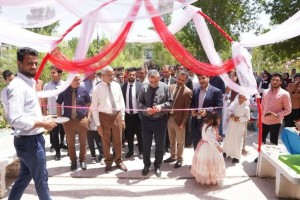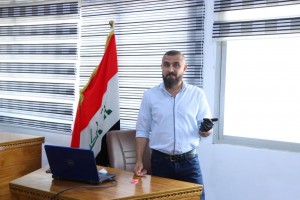
The College of Education for Pure Sciences at the University of Basra discussed a doctoral thesis on the survey and classification of wild arthropods with the study of some evidence of their biodiversity in the province of Dhi Qar.
The thesis presented by the researcher (Ghassan Adnan Ali Al-Yacoub) included
The current study was conducted in four permanent stations, two desert (al-Kataa’a and archaeological ziggurat) and two agricultural (Al-Aziraj village and Ur district), in addition to four temporary agricultural stations (Al-Rifai district, Suq Al-Shuyoukh district, Al-Islah district and Batha district), all located in Dhi Qar governorate. Samples were collected. From December 2020 to November 2021.
Four groups of arthropods were classified and characterized, namely, the order of scorpions, the order of spiders, the class of polypods (cephalopods and dicotyledons) and the family of dark beetles. 1077 samples were collected, and the number of diagnosed species was 31, some of which were recorded for the first time in Iraq.
Some environmental factors were also measured in the studied stations. Some biodiversity evidence was also measured, and the results showed that the highest value of the Shannon index was 2.639 in the Al Azrig agricultural station and the lowest value of 2.097 in the desert ziggurat station, and the highest value of equivalence was 0.6785 in the ziggurat station and the lowest value of 0.5134 in the desert station Al Kati'a, and the richness index was the highest value It has 3,990 at the Al Azrig station and a minimum value of 2.267 at the Ziggurat station.
The results also showed that the values of Whitaker's index were the highest between Ur district agricultural station and Al-Kata'a desert station, as it reached 0.61, and the lowest value was 0.21 between Al Azraj agricultural station and Ur district agricultural station as well. The values of the qualitative similarity index for Jacquard among the study stations showed that its highest value was 0.64 between Al-Azeraj station and Ur district station, while the lowest value was 0.24 between Al-Kati`ah station and Ur district station.
The results of temporal diversity showed that the highest value of the Shannon index was 2.661 in March and the lowest value was 2.051 in December, and the highest value of the parity index was 0.8797 in June and the lowest value was 0.4860 in December, while the wealth index appeared in the highest value, which is 3.976 In March, the lowest value was 2.325, and it was in June. With regard to the qualitative similarity index for Jacquard, the highest value was 0.850 between the months of October and November, and the lowest similarity value was 0.227 between the months of April and July.
The aim of the study was to conduct a survey and diagnosis of wild arthropods in areas of varying geographical diversity (desert areas and agricultural areas) of Dhi Qar Governorate. And provide a taxonomic description of the diagnosed ranks with their taxonomic keys. And recording some important environmental factors in the study areas and using some biodiversity evidence.
Thesis concluded
Diversity of wild arthropods in the study area, black beetles were the most common with 10 species, followed by spiders, scorpions, ocean-footed and double-footed, with 9, 5, 4 and 2 species, respectively. And the decrease in the appearance of species in general in the summer months compared to other seasons and this may be due to behavioral adaptations and their activity during the night period. The types of arthropods prefer various environmental requirements, which results in their presence in locations of a different geographical nature., no multi-footed group (oceanal and bipedal) was observed in desert areas except for a species and this reflects its need for a certain level of moisture in the soil.
Recommended thesis
Conducting comprehensive taxonomic studies for each articulated group separately and providing diagnostic keys, as there are still few studies about them in Iraq. And survey of wild arthropods found in areas of different geographical diversity. It sheds light on the important aspects of the life of different arthropods and determines their importance, roles and interaction with various living and non-living aspects.









